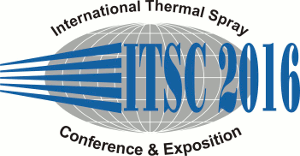
|
| Abstract No.: |
|
Scheduled at:
|
Tuesday, May 10, 2016, Auditorium 11:50 AM
Cold Gas Spraying I
|
|
| Title: |
Cold spray of agglomerated submicronic hydroxyapatite powders for biomedical applications
|
|
| Authors: |
Vincent Guipont* / MINES ParisTech, France
David Moreau / MINES ParisTech, PSL Research University, MAT - Centre des matériaux, CNRS UMR 7633, france
Laurent Corté/ MINES ParisTech, PSL Research University, MAT - Centre des matériaux, CNRS UMR 7633, france
Francois Borit/ MINES ParisTech, PSL Research University, MAT - Centre des matériaux, Center for spray processing, CNRS UMR 7633, france
|
|
| Abstract: |
Hydroxyapatite (HA) is commonly used today as a ceramic to coat metallic dental and orthopedic implants in order to achieve an osteoactive layer in direct contact with bone tissues. The main conventional process to produce such coatings is plasma spray of pure HA powder. However, the melting of HA during the plasma process drastically affects the phase composition and crystallinity of the HA coating. To maintain the osteoactive property, the spraying parameters have to be accurately controlled to maintain at least 50% of pure crystalline HA within the coating. Therefore, a solid state deposition process like cold spray of HA powder might have a great potential to achieve fully crystalline HA coatings. Moreover, other harmful thermal effects to the substrate from the plasma or from the hot particles could be avoided. Thus, HA coating by cold spray could also be envisaged favourably in the case of thermosensitive polymer substrates. In this work, two agglomerated hydroxyapatite powders, respectively with and without heat treatment after agglomeration were cold sprayed for various spraying parameters. The cold spray process of pure HA coatings has been implemented through single track on two different biocompatible substrates: a hard metallic substrate (Ti-6Al-4V) and a soft polymeric substrate (poly (vinyl alcohol)(PVA)). The structure of the agglomerated HA powders and the corresponding features of the HA coatings were observed by scanning electron microscopy. Further thermal and structural analyses (TGA, DSC, XRD) were also carried out on powders to better understand their influence on the deposition process. It was shown that the agglomerated submicronic hydroxyapatite powders could lead to homogeneous layers of submicronic HA grains. This layer could be thick if some by-products of the chemical synthesis stayed within the HA particles. It was also shown that one HA layer remained adherent on PVA after swelling in water for one week.
|
|
